November 28th, 2008 admin
“I know of no other presentation of a particular place and people which is a broad and as captivating as James Ravilious’s photographs of North Devon. They are the fruit of a quite exceptional acuity and patience of witness and of a quite unusual humility and warmth of spirit. This great body of work establishes its author as a master of the art of photography whilst at the same time it makes an unparalleled pictorial contribution to social history.” Olive Cook, Matrix

Stephen Squire, hedger, taking a tea-break, Langham, Dolton, England, 1980
Jeremy Sutton-Hibbert has just alerted me to the work of photographer James Ravilious. James amassed a huge archive of images depicting rural England and rarely photographed more than 10 miles from his home. In 1997 he was given Honorary Membership of the Royal Photographic Society in recognition of his contribution to photography. He died of lymphoma in 1999.
Here is a biography for James taken from his website-
“James Ravilious was born at Eastbourne, England, the second son of Eric Ravilious, the war artist, wood-engraver and designer. James studied art at St Martin’s School of Art, London, and then taught painting and drawing in London for some years. He married Robin Ravilious (daughter of the glass-engraver Laurence Whistler) in 1970, and in 1972 they moved to Devon to live in a cottage near her family home in Dolton. They had two children: Ben and Ella.
In the early 1970’s James took up photography (self-taught), having seen its potential in the work of the great French photographer Henri Cartier-Bresson. Now John Lane, director of the arts centre in the neighbouring village of Beaford, invited James to contribute some work to the newly set up Beaford Archive, intended as a photographic record of life in a largely unspoilt, but vulnerable, country area. What started as a short-term project grew into a seventeen year obsession. In that time James took over 80,000 black and white images of all aspects of local life: landscape, farming, everyday life in the local towns and villages, and their special occasions. He also borrowed and copied over 5,000 early photographs of the same area.
The resulting historical span, and detail, he gave to the Archive makes it probably the most intensive record of any rural area in England. But it is more than that. Though never posed, James’s pictures are composed with the eye of an artist, and they capture subtle qualities of light – the result of years of experiment with pre-war Leica cameras and uncoated lenses. Above all, they are warmed by his affection and admiration for the people whose lives he recorded. His pictures reveal real life as it was being lived in late 20th century rural England when the country traditions that have been handed down for hundreds, if not thousands, of years were still part of everyday existence.”
You can find a selection of his photographs here.
Posted in OTHER STUDIES | 1 Comment »
November 28th, 2008 admin
Director of Y tu mamá también Alfonso Cuaron talks to Jason Solomons on the Guardian website about his latest film, Año uña, and intriguingly his plans to make a road movie in Britain. Watch the interview here.
Thanks to Owen Richards for sending me the link.
Posted in MISCELLANEOUS | Comments Off on ALFONSO CUARON
November 24th, 2008 admin
I’ve just received an email from James Tribble and Tracey Mancenido, married photo collaborators, who are six months into their year’s journey traveling around the US exploring the lifestyle and culture surrounding the trucking industry. A year on the road in their own rig, now that’s dedication. Good luck guys and I look forward to seeing the results.
For now, you can follow their progress over on their blog.
Here’s their most recent posting from Saturday, November 22, 2008:
“So far…….
… we have driven tens of thousands of miles and consumed almost as much in fuel to watch the seasons change through our windshield. We have seen gas prices reach record highs of $5/gallon now plummeting well below $2. We drove through hurricanes Edouard and Ike and found ourselves working with FEMA who seemed to have learned their lesson after Katrina. We listened on the radio as the mortgage crisis became a world economic disaster. We sent out absentee ballots holding our breaths as we drove across this vast landscape confronted with ignorance, racism, and poverty. Our belief in the American people strengthened as for the first time in our lives have we truly felt proud to be an American. We live vicariously through satellite radio and occasions of broadcast television. We experienced a loss at a difficult time in our family with a 22hr drive straight home from wherever we were.
The infinite open of the road makes us feel like we are watching the world pass before our eyes. Our days blend into nights no longer identified with words and numbers. The fall is now winter conjuring feelings of unease to the thought of rubber and snow.
Much has happened since we left the comforts of the life we once had and are soon to rejoin. We look forward and can’t imagine what will happen on the second half of this wandering and appreciate every moment we have to experience and capture it all. Then the real fun part begins: editing!”
And they’ve been kind enough to send me a few pictures from the road-
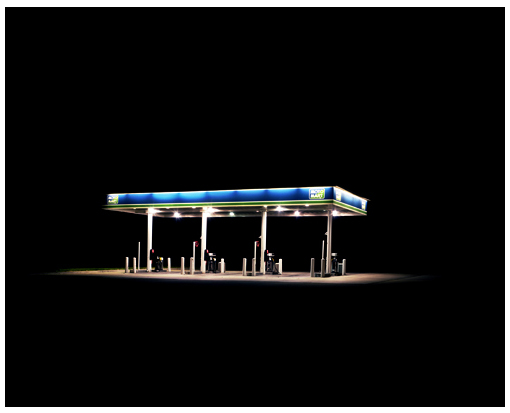
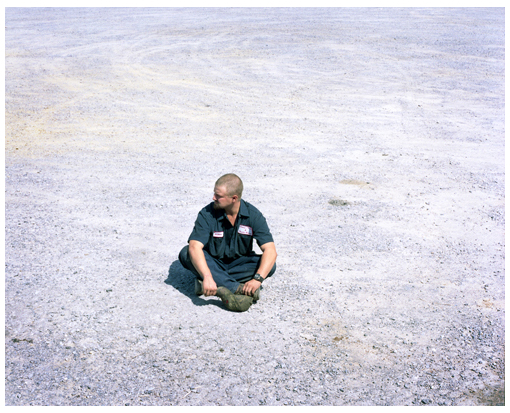
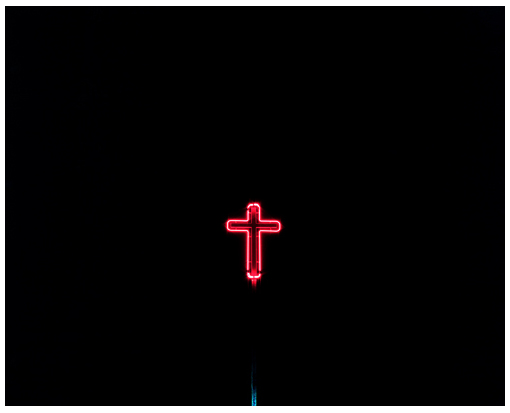
Posted in EASY RIDER | Comments Off on THE TRUCKERS
November 24th, 2008 admin
Thank you to those who posted up ideas for my homeland competition last week, your suggestions made interesting reading.
I’ve decided to give the prize to Daniel Shea who put forward a project by the young American photographer Adam Golfer and specifically his project called kin*.
Although Adam’s project doesn’t deal directly with his own homeland (he grew up in the suburbs of Washington DC) it does relate to his identity as a Jewish American and is closely associated with his family’s history. The work is ongoing and the images on his website form the foundation of his project.
Adam went to college in Baltimore and moved to Brooklyn in the spring of 2008. Since then he’s been working as a freelance photographer. His pictures have appeared in W Magazine and Culture+Travel. This past summer, he traveled through Germany for seven weeks, starting work on a documentary about the land and the young people there. He’s currently applying for grants which would allow him to travel to Israel in the Spring of 2009 to continue working on the next chapter of the project. The aim is to photograph in both Germany and Israel, ultimately bringing the two parts of the project together as a book.
Here are a selection of photographs from kin* (the work is titled as such because ‘kin’ is “an acknowledgment of a connection, a shared experience/history…but there is an asterisk attached because it is not as simple or straightforward as that…we aren’t family, but there is a definite bond which exists”). Below, you can read what Adam told me about the work.
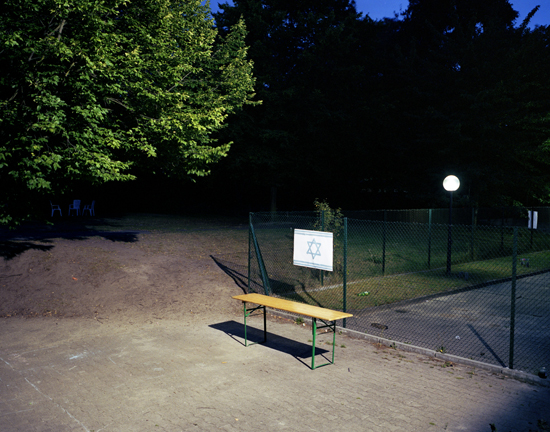
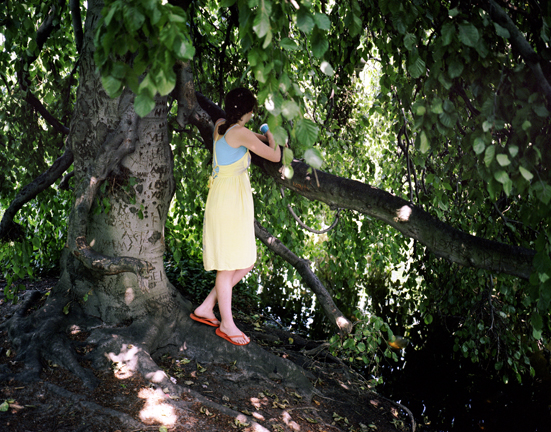
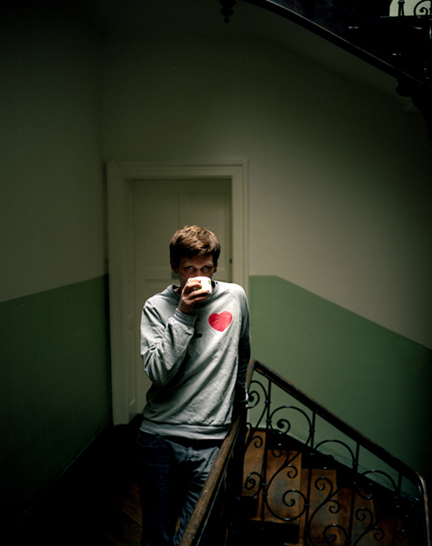
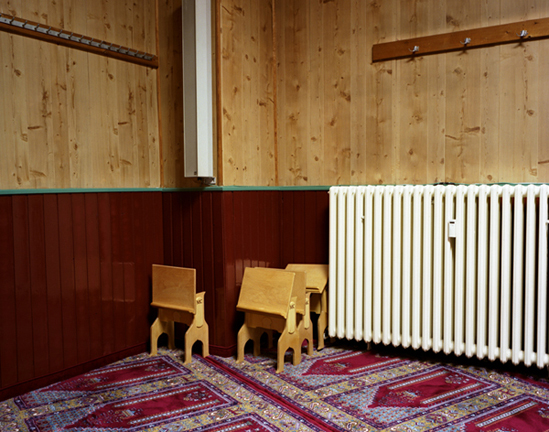
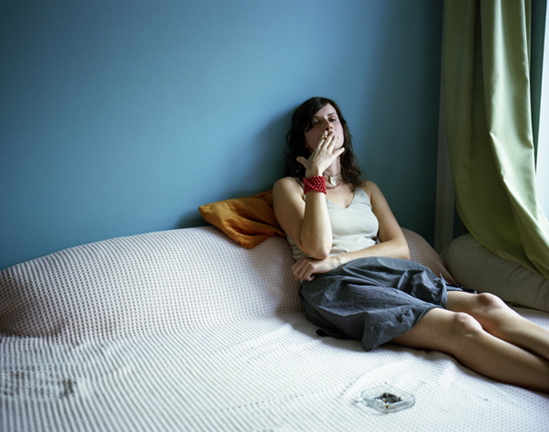
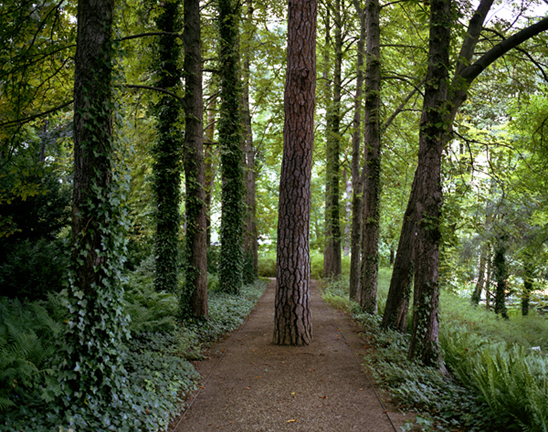
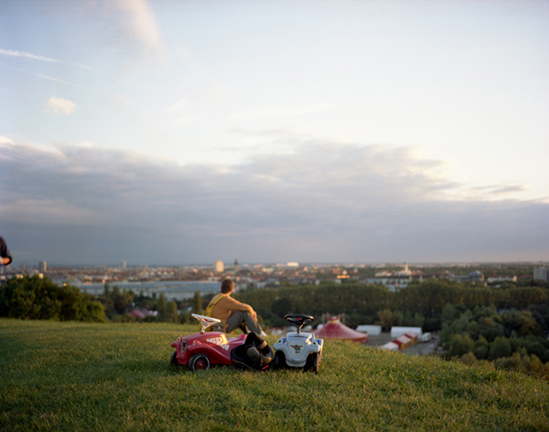
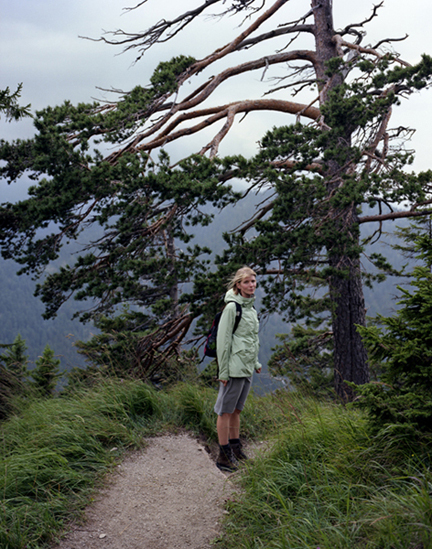
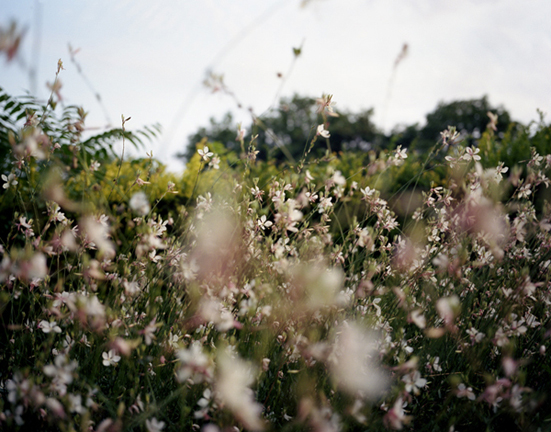
kin* by Adam Golfer
“My project kin* brought me to Germany to investigate a part of my family’s history that I’ve always been fascinated by. My grandparents were Holocaust survivors, and although they were not German, they were displaced and brought to concentration camps in Germany during the war.
For a long time I struggled to come up with a way to explore this topic without being overly sentimental or relying on a history of victimization. I’ve seen so much photography attempt to deal with Germany in a melodramatic way, depicting grainy black and white imagery and deserted, stark landscapes without sunlight or signs of life. It is almost always expressed from a specifically Jewish point of view.
However I was concerned with a different side of Germany, one that addresses the 3rd generation of people removed from the Third Reich. My intentions were to meet other 20-somethings (like myself) to see how they live their lives. There is a commonality, a bond between who I am, as a Jewish American, and who they are as Germans. History ties us together, and I went to Germany to see if this bond would manifest itself in person. It was my own way of approaching a land that I had always scrutinized and felt a certain paranoia towards.
The subject matter is very general, but also extremely personal and specific to me. My experiences were very reliant on the incredible people I continued to meet over the course of my trip (two months). As I moved through the country, I thought a lot about Robert Frank’s experiences working on The Americans. How he had some big ideas about themes he wanted to convey, but much of the project was left open.
The work is certainly in progress, as I plan on traveling back to Germany and to Israel to investigate a much deeper relationship between Germans and Israelis, sixty years after World War II.
As a Jewish American, I have a very complex relationship to Israel. Culturally, I feel incredibly connected to the land, and having visited almost four years ago, I feel a need to go back to spend more time there. Israel is fascinating because there is a direct overlap between Judaism as a cultural group, unified into an international group after the Holocaust, and Judaism as a religion/faith. I align myself much more with the secular/cultural side of things. Spending time in Israel was a spiritual experience, but it had little to do with god, and everything to do with history. To be around structures thousands of years old in the Old City, in Jerusalem is mind boggling. History is in front of you everywhere you look.
I was trying to explain my fascination with the two countries to a friend before embarking on my trip this summer. I said something to the effect of: ‘My heart belongs to Israel and my mind belongs to Germany.’
Every Jewish person has conflicting feelings about Israel, Germany or both. Some go to Israel and feel nothing. Others never have any desire to go to Germany, because of the horrific history. My interest in both countries is a direct result of these sentiments. I was determined to draw my own conclusions about Germany, pushing aside all of the stereotypes I had developed, and see for myself.
My focus on meeting young people there my own age comes out of the idea that we are two generations removed from the Holocaust. Therefore we are much more capable of seeing the bigger picture and looking at things with a bit of perspective. I believe there is something inherent in Israel, something which ties it to Germany. There is an ancient history there, and also a young nation founded in the ashes of genocide and death. Something about the relative youth of the country and the deep and complex history of the Jewish people fascinates me.
It is a complex relationship. Since WWII the two societies have developed almost as complete opposites; Israel, a country founded on Zionist, nationalistic principles, establishing a powerful military, and post-war Germany, under the microscope of the world, developing into a somewhat pacifist, anti-nationalist state. There is an intrinsic, undeniable link between the two nations. Both peoples share the mind-set of ‘never again’ but from two distinct sides.”
Posted in EASY RIDER | Comments Off on kin*
November 20th, 2008 admin
I’ve recently come across the photography blog American Suburb X, which features reviews of work of well known (and not so well known) photographers alongside lively prose by author dR. It’s definitely worth looking at.
Oh, and the current issue has a rather flattering review of Motherland which you can read here!
Posted in MISCELLANEOUS | Comments Off on IN THE SUBURB
November 11th, 2008 admin
I’m knee deep in nappies and won’t be back on the blog this week. So in the meantime I thought I’d run a small competition and giveaway a copy of the wonderful book Our True Intent Is All For Your Delight: The John Hinde Butlin’s Photographs to one reader.
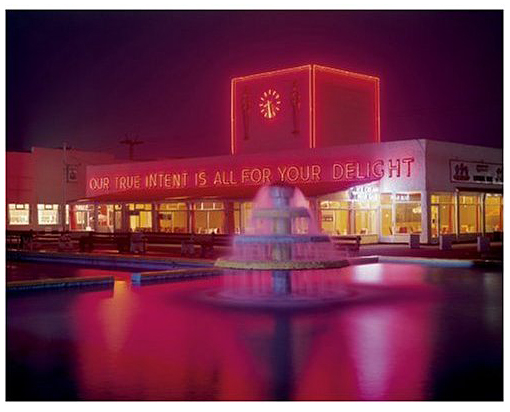
As you know, I’ve recently been looking the work of photographers who have made significant documentaries exploring their homeland, which was somewhat inspired by a comment Joel Sternfeld recently made in an interview in PLUK magazine (Summer 2008), where he said “I thought about ‘home’ and its power, and about an idea I have that many of the great practitioners photograph their ‘home’ landscapes.â€
While I’ve concentrated my efforts on looking at the work of British photographers and in my Easy Rider series, the work of American and German photographers, now I’d like to hear your suggestions. Please post or email me your ideas of work by photographers (which could be you) that have explored their own ‘homeland’ with a short explanation of why you think their work is important. By homeland, I mean the country where one was born or now considers their home.
I’m particularly interested in countries other than those I’ve already looked at.
One reader will receive a copy of Our True Intent and a signed copy of Motherland.
Posted in EASY RIDER | 15 Comments »
Our second daughter, Florence, was born this morning.
Oh, and that bloke Obama was elected President of the United States!
Posted in MISCELLANEOUS | 6 Comments »
It’s probably worth making a quick nod to the photographers Bernd and Hilla Becher given, not just their significant influence on contemporary German photography, but also their method of working.
From the beginning, the Bechers worked systematically at their task. They undertook countless journeys in their Volkswagen van, which also served as a bedroom, improvised darkroom, and mobile nursery for their son, Max, who was born in 1964. The routes they staked out in their Düsseldorf studio took them to the far corners of western Europe and north America, through Germany, the Netherlands, Belgium, France and Luxembourg. In 1966, they undertook a six-month journey through England and south Wales, taking hundreds of photographs of the coal industry around Liverpool, Manchester, Sheffield, Nottingham and the Rhondda Valley.
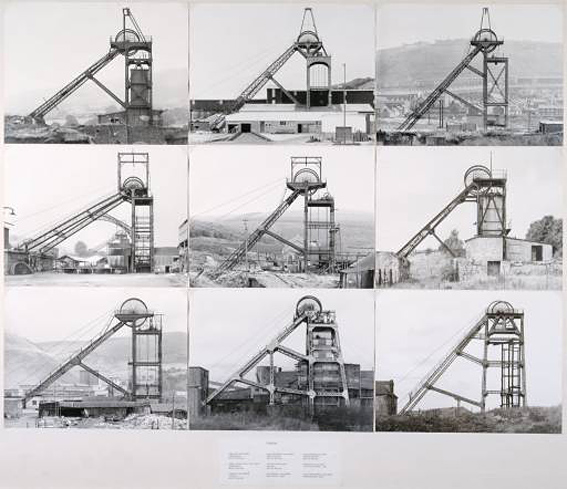
Pitheads, 1974 © The Bechers. All taken at collieries in Britain. From the Tate Collection.
Bernd Becher was born August 20, 1931, in Siegen, Germany. He studied painting and lithography at the Staatliche Kunstakademie Stuttgart from 1953 to 1956 and studied typography at the Staatliche Kunstakademie Düsseldorf from 1957 to 1961. Hilla Becher was born Hilla Wobeser on September 2, 1934, in Potsdam, Germany. She studied painting at the Kunstakademie Düsseldorf, where she met Bernd Becher. The two artists first collaborated in 1959 and were married in 1961. They began working as freelance photographers, concentrating on industrial photography.
From their first series of photographs of water towers, the artists have not veered from architectural portraiture subjects, using both industrial and domestic structures such as gas tanks, silos, framework houses, and the like. They were given their first gallery show in 1963 at the Galerie Ruth Nohl in Siegen and by 1968 were exhibiting in the United States as well as in European cities outside Germany.
You can see a portfolio of their images here.
Bernd Becher died in 2007, and you can read an obituary on The Guardian here.
And, of course, you can read an interview with Hilla Becher entitled ‘Of course we were freaks’ by Tobias Haberl and Dominik Wichmann on the Joerg’s Conscientious blog here.
Posted in EASY RIDER | Comments Off on EASY RIDER, Part 7 – THE BECHERS
Photographer Owen Richards has just emailed me and suggested I take a look at this film by Christopher Petit.
RADIO ON (1979) is described as a post-punk journey through 70s England. It’s become a cult film since its initial release and some claim it’s one of the most striking feature debuts in British cinema. Co-produced by Wim Wenders and featuring Sting’s first film performance, RADIO ON is austere in narrative and captures the lurking disenchantment of the British youth movements of the time.
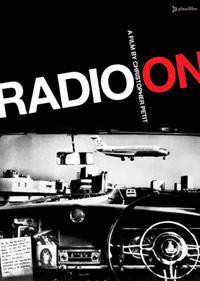
RADIO ON was photographed in monochrome by Martin Schaefer (Wenders’ cinematographer), and its soundtrack featured tracks by Bowie, Kraftwerk, Lene Lovich, Ian Dury and Wreckless Eric. Petit’s anti-road movie follows a London DJ (David Bearnes) as he travels to Bristol to investigate the mysterious death of his brother, and offers a unique, compelling and even mythic vision of a late 1970s England.
It’s been described as “a subtle, masterfully understated meditation on late 1970s Britain. Its loose, barely-existent narrative is told through a rich monochrome print of ghostly whites and glossy blacks: presenting fractured, dehumanising Ballardian urban backdrops alongside gloomy, ethereal rural landscapes. Resonating panning shots of cityscapes, saturated with the detritus of defunct nineteenth century industry, alongside boarded-up, dilapidated buildings, abandoned petrol stations and empty hotels all contribute to a profound and poignant sense of simultaneous wonder and dread. Beautifully crafted static shots emphasise the empty meaning of modern existence through images of blank, static television screens, monotonous flickering marquees and lurching fuel-pump dials.”
You can watch a trailer here.
I’m going to add it to my viewing list!
Posted in MISCELLANEOUS, OTHER STUDIES | Comments Off on RADIO ON
Continuing my Easy Rider series, I’m now going to turn to the work of two German photographers who have produced studies of their homeland and whose work I’ve found particularly inspiring. They are Joachim Brohm with his book Ruhr (Steidl, May 2007) and Peter Bialobrzeski with his book Heimat (Hatje Cantz, out of print).
In this post, I’m going to look at the book Ruhr.
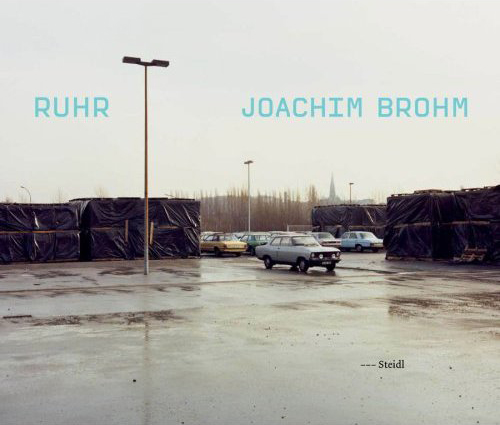
I was introduced to the work of Joachim Brohm by Marcus Schaden in Arles last year. Marcus was very excited about Brohm’s recently published photographic series, which documented the German Ruhr area during its industrial decline from the late 1970s to the mid-80s. And I could see why, it’s a superb book. The photographs have a freshness to them, while retaining a clear and focused aesthetic. There are 50 pictures in total, the earliest going back to his photographic training at the Essen Folkwang School from 1977, and an insightful introductory essay (Topographies of Anonymity) by Heinz Liesbrock.
One of the most interesting aspects of this work is the fact that Brohm became one of the first to engage with the issues raised by American photography – the landscape photography of the nineteenth century and the topographical photography from 1970 onwards – and transport them into a European context. As a result, Ruhr is an integral link between USA and European photography (or as Liesbrock describes it “a cross fertilisationâ€) and its special significance is revealed with this first complete monograph.
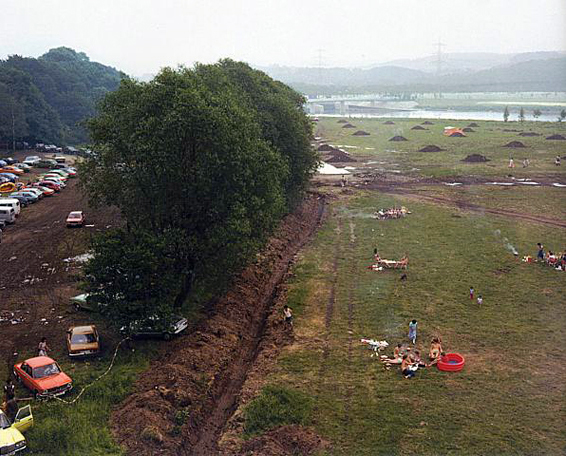
Bochum, 1983 © Joachim Brohm
Liesbrock sees the work of Brohm, along with Michael Schmidt and Heinrich Riebesehl, as among the first European photographers to engage intensively with the aesthetics of American photographers like Robert Adams, William Eggleston and Stephen Shore. He writes: “All of them understood the gaze of the American photographers as a framework in which they can deal with questions from their own German cultural context, and this is why it is not by chance that they all begin their engagement with the Americans in the familiar context of their immediate home environment.†For Schmidt this is Berlin, for Riebesehl the agrarian landscape of Lower Saxony, for Brohm it is the Ruhr. This engagement with American photography, which today is recognized as classical, was at that time a matter for a select few.
In describing Brohm’s aesthetic, Liesbrock writes: “At first sight there are two aspects in particular that catch our attention. First the directness of the photographic gaze with which he addresses the visible and the unpretentious way in which he translates it into a restrained compositional structure….The pictorial aesthetics developed by Brohm are intentionally kept close to amateur photography. A second important aspect of his conception of the image is his use of colour. For a photographer with artistic ambitions to use colour as a medium was still the exception in Europe around 1980….Brohm’s Ruhr, as we encounter it in his pictures, is also characterize by this wish to expose specific pictorial energies in the banal, the seemingly expressionless.†Later on in his essay Liesbrock describes Brohm’s use of colour as a “restrained colouration to reflect the uneventfulness of the scenery of the Ruhr as a place where nothing happens…He develops colour into a stylistic feature devoid of any strident notes….The colour seems flat, it has no radiance but rather remains self-contained.â€
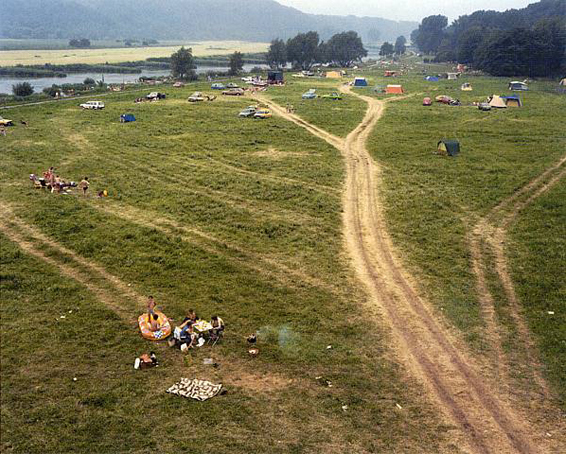
Bochum, 1982 © Joachim Brohm
To a large extent Brohm turns his gaze on urban life at the edges of the Ruhr, where existence tends to have a rural feel, where shopping centres and small business zones have established themselves. As Liesbrock puts it “a placid zone of seemingly uninterrupted leisure time.†Brohm observes people from a distance, avoiding intimate perspectives and arranges expressions of human activity in harmony with the architecture and the landscape. An elevated camera position is a common theme. “People seemed safely at home in it, in fact lulled into repose, inconsequential, they have no echo. This familiar, everyday ambience assumes a form of quiet monumentality†says Liesbrock.

Essen 1982 © Joachim Brohm
Liesbrock closes his essay by describing Brohm’s significant contribution to recent photographic history and explaining why his work has gone unacknowledged for so many years (overlooked by the large-format colour photography that had been developed in Bernd Becher’s class in Dusseldorf that became the centre of attention – works of Andreas Gursky, Thomas Struth…) and has only now been published, twenty years after the photographs were taken. He writes, Brohm’s work “constitutes a central link between photography in the USA and Germany since 1970. Anyone looking at the sequence of pictures in this book, will also discover in Ruhr a work of unmistakeable artistic vitality, which will be of lasting significance, independently of all historic coordinates.â€
Joachim Brohm, born in Dülken, Germany in 1955, studied visual communication and photography at the University of Essen and at Ohio State University in Columbus, Ohio. He has had one-man shows at Fotoforum Bremen; Spectrum Photogalerie in the Sprengel Museum, Hannover; Museum Folkwang in Essen; and Fotomuseum in Munich. Brohm lives in Essen and Leipzig.
If you want to see more of Brohm’s work, he’s published two further books with Steidl, Areal and Ohio.
Posted in INSPIRATION | Comments Off on EASY RIDER, Part 6 – THE GERMAN CONNECTION





















